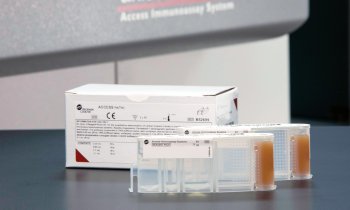
Credit: The BC Centre for Excellence in HIV/AIDS
News • HIV
Researchers date 'hibernating' HIV strains
Researchers have developed a novel way for dating "hibernating" HIV strains, in an advancement for HIV cure research in the province. The HIV cure research confirms that dormant HIV strains can persist in the body for decades.
"If you can't identify it, you can't cure it. This research provides further essential clues in the pursuit of an HIV cure—which will ultimately require the complete eradication of dormant or 'latent' HIV strains," said Dr. Zabrina Brumme, Director, Laboratory with BC-CfE and lead author on the study. "Scientists have long known that strains of HIV can remain essentially in hibernation in an individual living with HIV, only to reactivate many years later. Our study confirms that the latent HIV reservoir is genetically diverse and can contain viral strains dating back to transmission."
"By creating family trees of viruses using a technique called molecular phylogenetics, we can reconstruct the evolutionary history of HIV within a person," said Brad Jones, a Ph.D. student with UBC at the BC-CfE and the first author on the study. "In essence, we created a highly calibrated 'time machine' that gives us a specific time stamp for when each dormant HIV strain originally appeared in a person."
Dormant HIV strains, which have integrated their DNA into that of the body's cells, can persist for years and are unreachable by antiretroviral treatments and the immune system. They can reactivate at any time, which is why HIV treatment needs to be maintained for life.
Dormant HIV strains
"If you can't identify it, you can't cure it."
Dr. Zabrina Brumme
Through advances in antiretroviral therapy, an individual living with HIV can now live a longer, healthier life on treatment. Treatment works by stopping HIV from infecting new cells. On sustained treatment, individuals can achieve a level of virus that is undetectable by standard blood tests. An undetectable viral load means improved health and that the virus is not transmittable to others—the concept behind Treatment as Prevention.
"Previous research had already revealed that the HIV reservoir was genetically complex. With our method, we can now understand that complexity with greater granularity, pinpointing exactly when each unique HIV strain originally appeared in a person," said Dr. Jeffrey Joy, Research Scientist at the BC-CfE and co-author on the study.
"In order to eradicate HIV from a person's body, you first need to know the characteristics of HIV in the latent reservoir," said Dr. Art Poon, Assistant Professor in Pathology and Laboratory Medicine at Western University, also a co-author on the study. "We are providing a method for better measuring the timeline of virus latency and evolution within an individual living with HIV."
Source: University of British Columbia
07.09.2018











